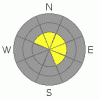The Wasatch Powderbird Guides are up and running. Go to their blog to see their operation schedule today.
We are recording our early morning phone line, (1-888-999-4019, option 8), with avalanche information, by 5:30 am – it’s a good source for dawn patrollers. Also, many of the day’s observations are posted on line under Current Conditions by 10 pm each evening.
Pro Riders Workshop at Snowbird The Utah Avalanche Center and Snowbird Ski and Summer Resort are partnering to offer the first annual Freeride Avalanche Summit, Dec.17-18. The two-day clinic targets advanced and expert skiers and riders who want practical and professional instruction on avalanche awareness, safety and rescue. The Freeride Avalanche Summit includes a unique blend of instruction that combines the expertise of industry leading avalanche forecasters with the experience and influence of local, professional athletes. Click here for more info and to register- http://www.snowbird.com/freerideavalanchesummit.html
Our web site is now formatted for iPhone. You can also download a free iPhone application from Canyon Sports to display the Bottom Line. Search for Utah Avalanche on the Apple's iPhone Apps page or in iTunes.
If you want to get this avalanche advisory e-mailed to you daily click HERE.
For a text only version, the link is on the left side bar, near the top.
UDOT highway avalanche control work info can be found by calling (801) 975-4838. Our statewide toll free line is 1-888-999-4019 (early morning, option 8).
Donate to your favorite non-profit – The Friends of the Utah Avalanche Center. The UAC depends on contributions from users like you to support our work. To find out more about how you can support our efforts to continue providing the avalanche forecasting and education that you expect please visitour Friends page.
We appreciate avalanche and snow observations. If there’s something we should know about give us a call at (801) 524-5304 or 1-800-662-4140, or email us at uac@utahavalanchecenter.org. (Fax 801-524-6301).
The information in this advisory is from the U.S. Forest Service, which is solely responsible for its content. This advisory describes general avalanche conditions and local variations always occur.
Evelyn Lees will update this forecast on Wednesday morning. And thanks for calling. |



